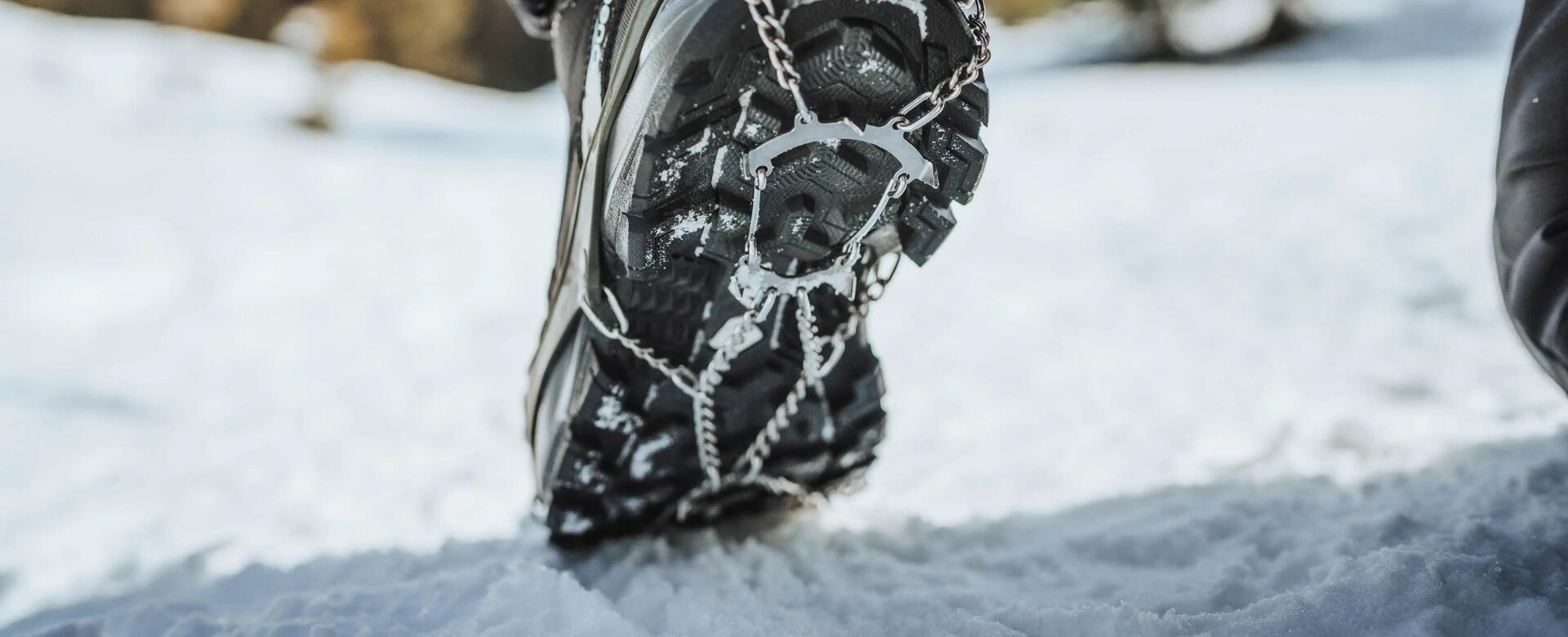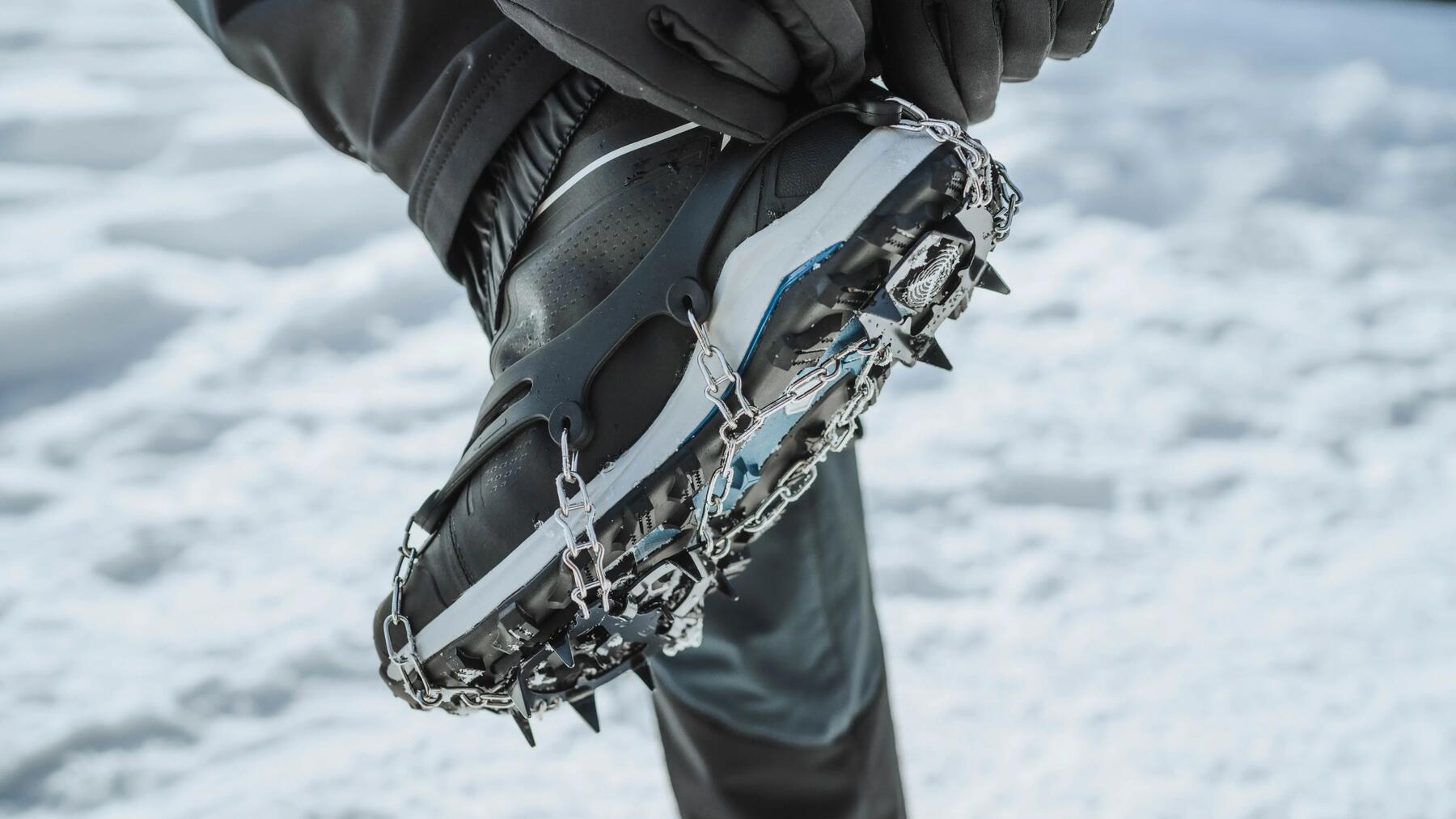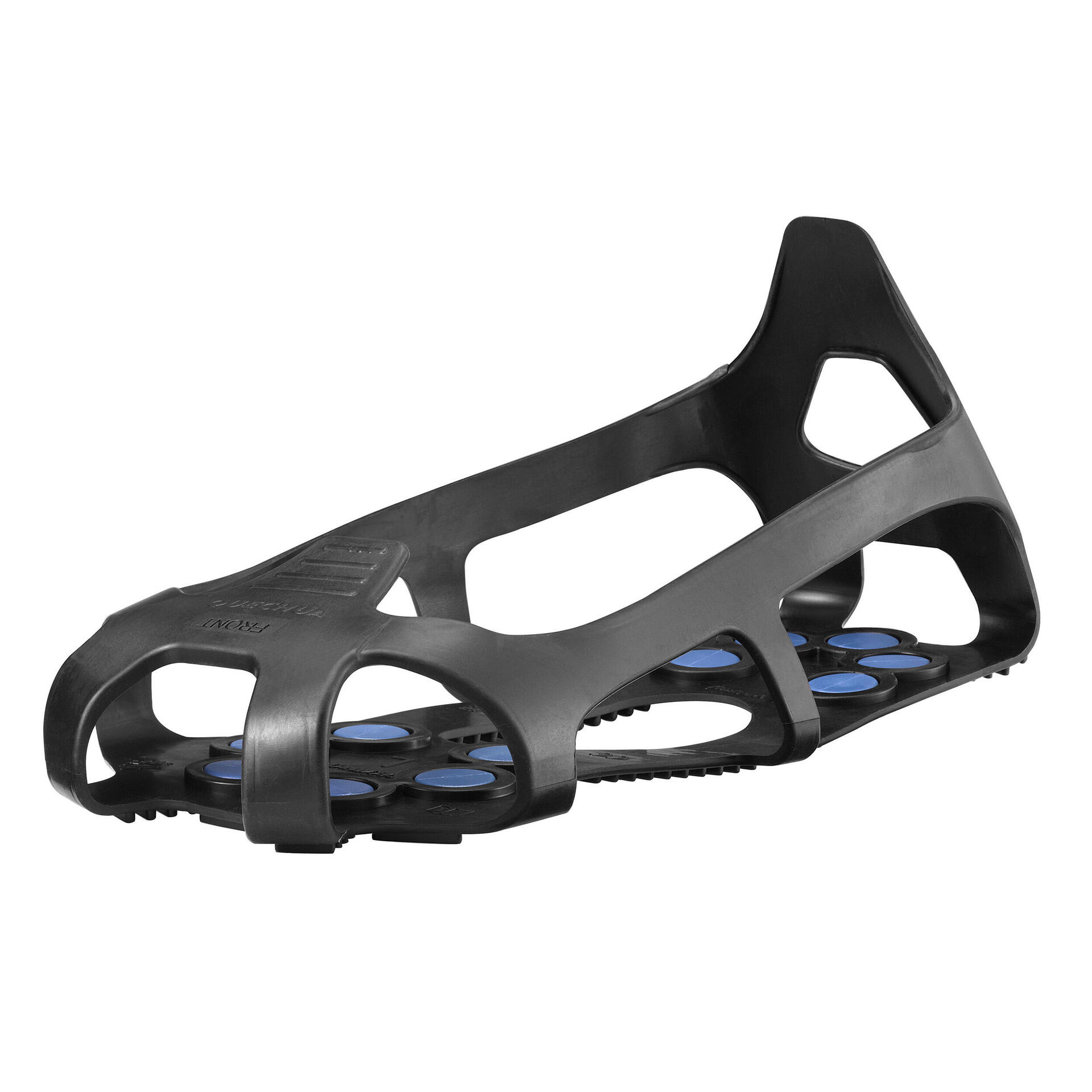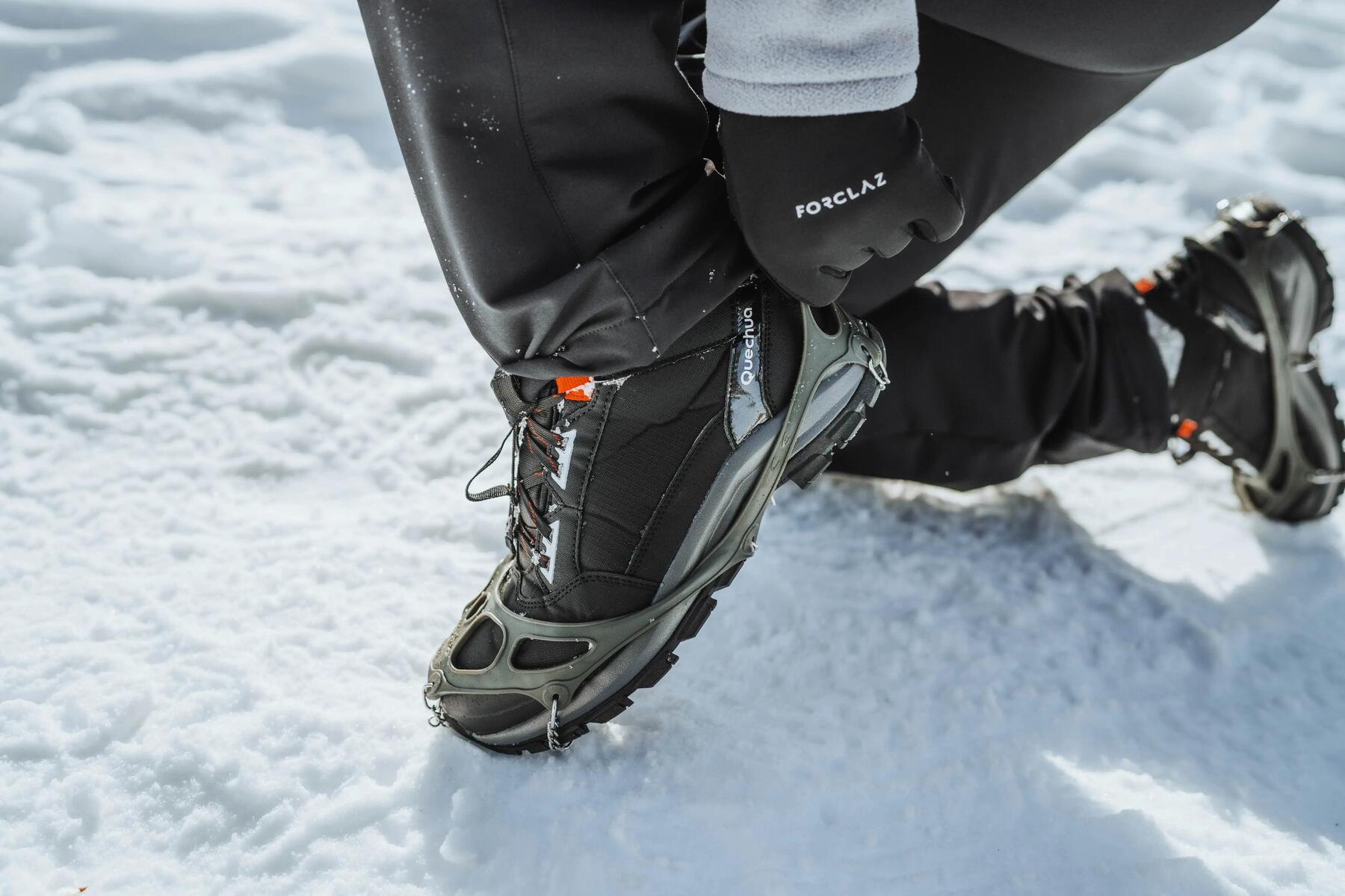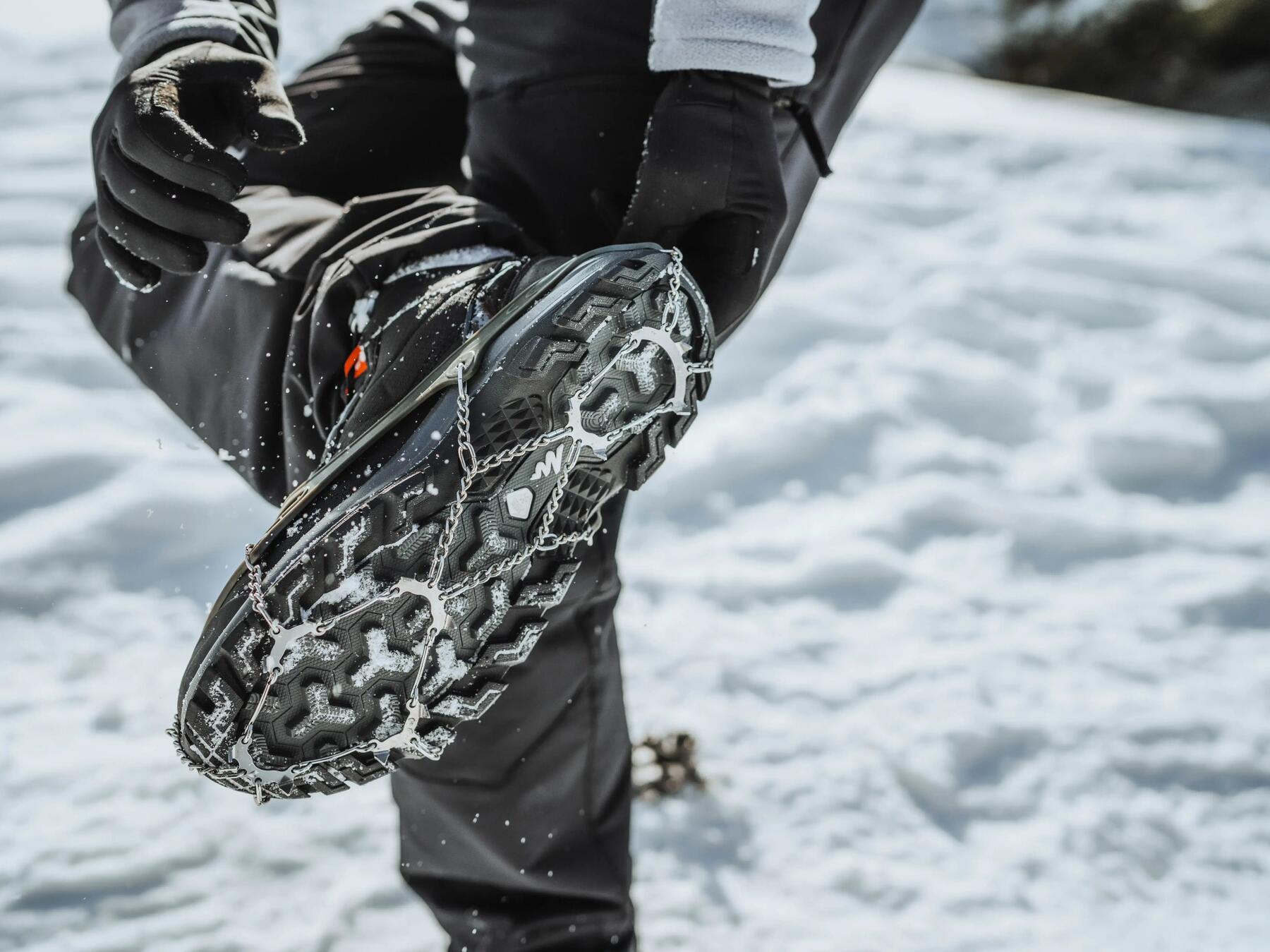Snow hiking crampons are essential pieces of equipment for walking safely on snowy or icy surfaces. But in order to guarantee their effectiveness and protect users from the risk of a fall, they must meet strict safety requirements.In Europe, these crampons are classified as Class 2 Personal Protective Equipment (PPE), a category that groups together products that can cause serious injury if they fail.
This classification entails mandatory certification before marketing.This EC marking specific to PPE guarantees that the product has been tested and validated according to stringent criteria.Also, this certification only lasts for five years, after which the crampons must be retested and approved in order to continue to be sold on the European market.
Unlike mountaineering crampons, no single European standard exists for snow hiking crampons.Each laboratory therefore applies its own test benchmarking system to ascertain product reliability.
To certify our models, we call on two specialist laboratories:
>> The SH100 model is tested by SGS Fimko, according to the SGS Fimko PPE-43 Protocol
>> The SH500, SH500 Light and SH900 models are certified by TÜV SÜD Munich, which applies the PPP 63040B:2020 Rev.01 Protocol.
Before obtaining their certification, these crampons undergo thorough examination, including a study of the technical documentation (composition of materials, manufacturing plans, instructions for use, packaging, etc.) as well as a series of laboratory tests.
Three tests validate the safety of snow crampons.
To be certified as PPE, crampons must pass three major tests, carried out on different sizes, in particular the extreme sizes (S and XL).
> Corrosion test: this test entails exposing the crampons to a humid and corrosive environment in order to ascertain whether they rust or not.Corrosion-resistance is essential to guarantee the product’s longevity, and to avoid any degradation of its performance over time.
> Stretch test: the elasticity and resistance of the elastomer part undergo rigorous testing.This test ensures that the crampon can be put on and taken off without risk of tearing, and that it remains securely in place on the boot, even in difficult conditions.
> Grip test on ice: this is the most important test.A specialised machine simulates a person walking on ice, in order to measure the effectiveness of the crampons in terms of grip.
These rigorous tests lead to PPE certification to guarantee that our crampons offer reliable and long-lasting protection, allowing hikers to winter walkers to move around safely on icy surfaces.
